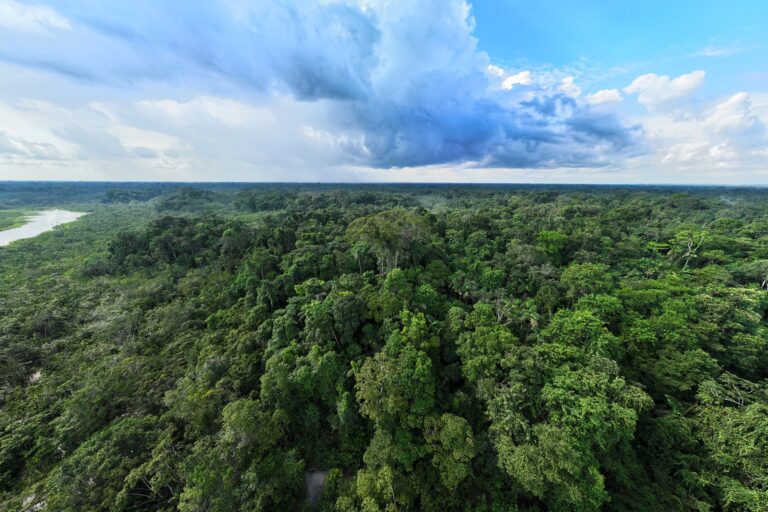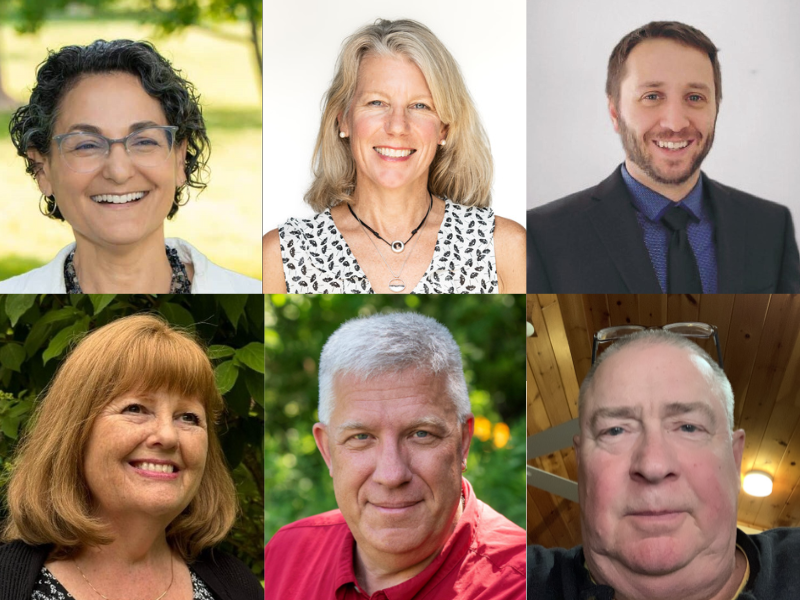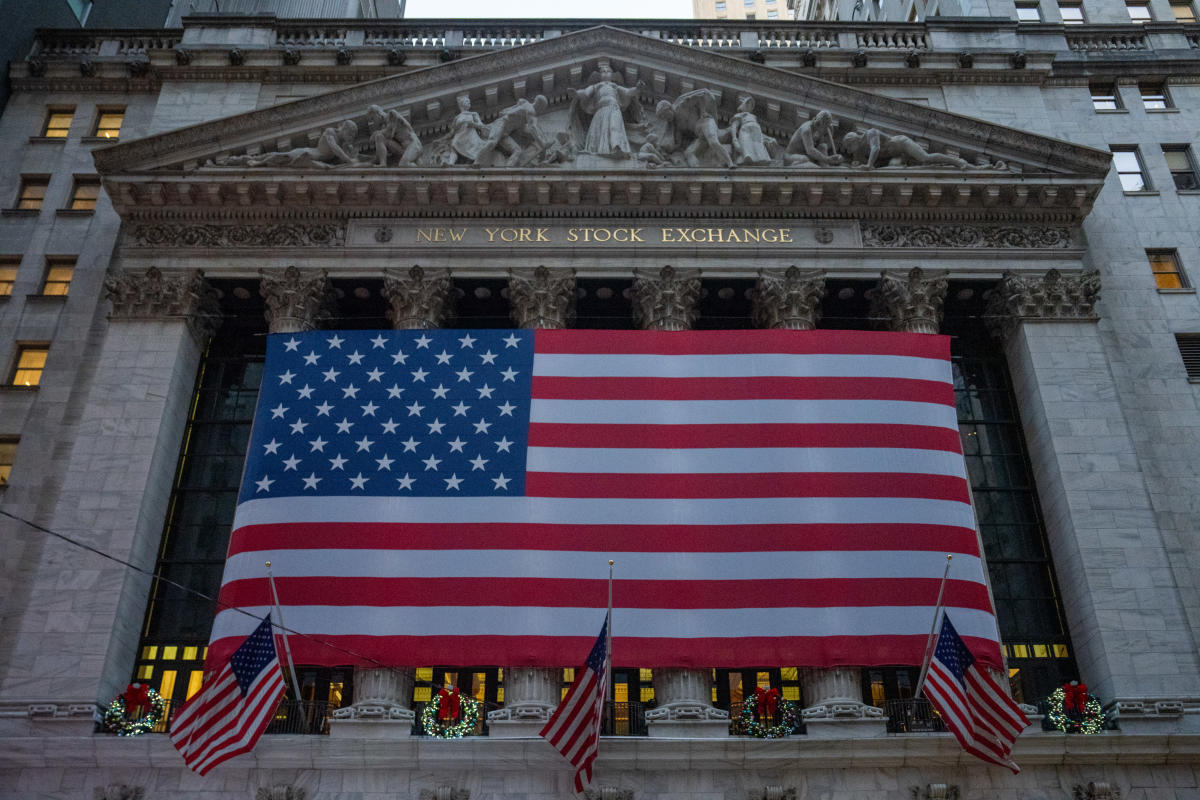In 2023, at the COP28 climate summit in Dubai, the Brazilian government proposed a new funding mechanism to help tropical nations keep their forests standing. They called it the Tropical Forest Forever Facility (TFFF), and its incentive is relatively simple: using satellite monitoring in participating nations to determine which ones have preserved their forests, and rewarding them based on that data.
You are viewing: What’s the TFFF? A forest finance tool ‘like no other’ shows promise, pitfalls
Fast-forward to the COP16 biodiversity summit in Cali, Colombia, in 2024. Mongabay contributor Justin Catanoso attended the conference and covered the new fund, which functions not as a donation mechanism or loan but rather as an investment portfolio. The money is “not going to a country as a loan that they have to repay. The investors get paid back first, and the money that is generated by the investments above what the investors get is what will be given to the tropical countries,” he says.
On this episode of Mongabay’s podcast, we speak with Catanoso, Charlotte Streck — co-founder of Climate Focus, an advisory firm — and Frédéric Hache, a lecturer in sustainable finance at the Paris Institute of Political Studies, about the TFFF. These three guests answer some of the more complicated and critical questions regarding what the proposed facility could — and would not — do.
The fund is currently a proposal and is therefore subject to change before it’s officially launched at the COP30 climate summit in Belém, Brazil, in 2025. But so far, there’s a mixture of optimism and skepticism regarding its potential as a novel mechanism of forest finance. Critics like Hache prefer the idea of redirecting the $500 billion of “harmful” governmental subsidies enjoyed by polluting industries, like the oil sector, for this use.
“What needs to be done is legislation to curb domestic destruction. And that in itself does not require funding,” Hache says.
But Streck is impressed by the fund’s simplicity, design, and how it’s championed by tropical nations.
“I think that TFFF is an initiative that has great potential because it is put forward and supported by tropical rainforest countries. It is not [a] mechanism that has been defined by donors or by any experts. It is now pushed and promoted by the countries that harbor all this tropical forest,” she says.
Listen to these various views at the link above or subscribe to/follow the Mongabay Newscast wherever you listen to podcasts, from Apple to Spotifyl One can also listen to all episodes here on the Mongabay website, or download our free app for Apple and Android devices to gain instant access to our latest episodes and all of our previous ones.
Mike DiGirolamo is a host & associate producer for Mongabay based in Sydney. He co-hosts and edits the Mongabay Newscast. Find him on LinkedIn, Bluesky, and Instagram.
Banner Image: Amazon rainforest in Ecuador. Image by Rhett Butler.
Notice: Transcripts are machine and human generated and lightly edited for accuracy. They may contain errors.
Charlotte Streck: I think that TFFF is an initiative that has great potential because it is put forward and supported by tropical rainforest countries. It is not something that, a mechanism that has been defied by donors or by any experts. It is now pushed and promoted by the countries that harbor all this tropical forest. And this in itself, I think, is very impressive.
Mike DiGirolamo (narration): Welcome to the Mongabay Newscast. I’m your cohost, Mike DiGirolamo, bringing you weekly conversations with experts, authors, scientists, and activists. Working on the front lines of conservation, shining a light on some of the most pressing issues facing our planet and holding people in power to account. This podcast is edited on Gadigal land. This week on the Newscast, we speak with three people about the recent Tropical Forest Forever Facility, or TFFF. A funding mechanism to give billions of dollars to tropical forested nations That protect their forests against a baseline. As reported on by Mongabay, the TFFF is a novel forest fund that essentially functions as an investment portfolio and pays tropical forested nations the money that investment countries make above their agreed upon return of 5. 5 percent over 20 years. You’ll first hear from Mongabay contributor Justin Catanoso who was present at COP16 in Cali, Colombia and reported on this fund. COP16 is the United Nations Convention on Biological Diversity, and delegates from 177 nations attended this conference. It’s a separate COP than the one that took place in Azerbaijan this year, which was COP29, the United Nations Framework on Climate Change. Then you’ll hear from Charlotte Streck, the co founder and director of Climate Focus, an international advisory company. And then from Frederic Hache, a lecturer in sustainable finance from SciencesPo in Paris. These three guests examine critical questions about the TFFF, what it does and doesn’t do. The fund, which the Brazilian government initially proposed at COP 28 in Dubai is expected to launch in 2025 at COP30 in Belem. As you’ll hear from our guests today, there is some mixture of optimism and skepticism surrounding the fund. But there is a definitive agreement that COP16 dropped the ball on the necessary level of forest finance to help halt and reverse biodiversity loss. And that wealthy nations are not stepping up to the plate to donate money to offset the destruction that they’re responsible for. Other funding mechanisms such as the Green Climate Fund or REDD+ have underperformed. And while the TFFF shows some promise, it is not a substitute for environmental regulation. And ultimately, ending and redirecting harmful subsidies needs to happen. First, I spoke with Justin about how the fund works.
Justin, welcome back to the Mongabay Newscast. It’s great to have you with us.
Justin Catanoso: Thanks, Mike. I am glad to be back.
Mike: So, you attended COP 16 in Columbia, and at this conference, something was announced called the Tropical Forest Forever Facility. What is the Tropical Forest Forever Facility? What does it do exactly? And how does it differ from previous funding commitments or forest protection mechanisms?
Justin: So, this is a finance mechanism. It really, it’s a finance strategy that best I can tell in my covering of UN climate summits over the last 10 years is that it is really new and it’s really novel in the climate world, in the biodiversity world, but not in the investment world. This is a lot like how banks work. How they lend money, how they charge interest, how they return money to investors based on a fixed amount of interest. So TFFF, as it’s called, will be an investment fund. They are, and they being the Brazilian government, which is the originator of this mechanism. They announced it last year at COP28 in Dubai, is essentially looking at six wealthy nations, which are the U.S., Norway, Germany, France, Great Britain, and the United Arab Emirates to invest, not donate $25 billion in early 2025. That is being seen as a kind of seed capital that will attract another $100 billion from international financial institutions like the World Bank or the International Monetary Fund. Perhaps big philanthropies like the Gates Foundation or the Bezos World Fund or even rich billionaires that want in on this, so they want to get up to $125 billion. That money is going to be invested in a portfolio of carefully selected slash aggressive investment vehicles. That they want to return five and a half percent on average over 20 years, five and a half percent return. Now, they believe that that five and a half percent return will go back to the investors every year. There will be money above that in interest that’ll be, raised and captured. To the amount of about 4 billion a year, and that’s what actually what will be on hand to distribute to about 70 tropical countries to incentivize them to keep their intact tropical forest standing rather than cut for agriculture, extraction, any other kind of deforestation like timbering.
Mike: So, what makes the TFFF different?
Justin: Mike, it’s not donations, it’s an investment. Like, this is how the banking world works. This is what finance responds to. These six nations and the philanthropies and the international banks are investing, not donating. They’re going to be getting a return on that money. They’re only putting that money up once. It’s going to be a sustainable fund if it is invested in a way that produces on average over 20 years, five and a half percent return, which is easily done by the way. If you go back and look at markets over the last 20 years going back, we’re well over five and a half percent up in terms of what happens in the market. This is a very doable fund with a lot less risk than donating money that you’re not really sure is going to the right places or is actually going to be used for the purposes that it’s going to be used for. There are other governance aspects of this fund in terms of monitoring to make sure that the forests are intact for the money that these tropical countries get. So, it’s really smart. And as it was described to me in Columbia. Like nothing else out there. So, there’s a really a good bit of genuine and I think like well-meaning optimism around this fund working where other donations year after year just don’t stand a chance.
Mike: So Justin, is this fund going to add debt to these countries that already have debt?
Justin: Mike, it shouldn’t because money isn’t going to them until there is investment capital. Money isn’t going to them until there is a return on the investments. The money that’s being donated is going into a portfolio of investments that will likely be the U. S. stock market. It’s not going to a country as a loan that they have to be repaid. The investors get paid back first, and the money that is generated by the investments above what the investors get is what will be given to the tropical countries. They should not be taking on any debt as a result of this.
Mike: So in your reporting for Mongabay, you mentioned that COP 16 utterly missed addressing the failure of wealthy nations to keep financial pledges to protect nature with 20 billion by 2025 and 200 billion by 2030. So, what happened here, Justin?
Justin: Well, what happened in Colombia is the same thing that just happened in Baku in, in Aboriginal with COP 29. Okay. We continue to expect G20 nations, the wealthy nations in the world, the ones that not only cause this problem, but have created wealth as a result of burning so much fossil fuels to sort of pay their fair share to offset the damages or prepare for, adaptation around the world. And it’s not happening. We don’t have governments in the United States, in the European Union, in Japan, that is willing to dip into their own funds, like their own government funds, to the tune of, Billions and billions of dollars every year as donations to fund the damage that’s been caused and the adaptation that’s needed. Now, should they? You know, a lot of people say yes, absolutely. The people getting the money have absolutely no carbon footprint. These are 70 to 80 of the most vulnerable nations. Most of them are island nations. They are low lying nations like Bangladesh, which is essentially a marsh with 600 million people, going underwater because of sea level rise?
See more : McKnight Named VP for Finance and Administration
Mike (note): Correction, the population of Bangladesh is estimated to be roughly 174 million people as of this recording.
Justin: Absolutely, they need trillions of dollars. But these governments aren’t lining up to donate year after year the money that they’re pledging to do. They’re donating some, but it is maybe one tenth of the amount they’re pledging, and that’s not even the amount that’s needed.
Mike: Justin, thank you so much for joining us to speak with us about this. We really appreciate it.
Justin: Thank you, Mike.
Mike (narration: Charlotte Streck had some notable points about this fund, and she answers a few critical questions such as who pays the $400 per hectare penalty, which is a point of contention for both Justin and Frederique. She also explains why she thinks this fund could succeed where other mechanisms, like REDD+ have failed. Charlotte, thank you so much for speaking with me today.
Charlotte: I’m very happy to be here.
Mike: So, you’ve mentioned that you’re impressed by the ownership and the level of commitment from this mechanism. So, what impresses you about it?
Charlotte: I think that TFFF is an initiative that has great potential because it is put forward and supported by tropical rainforest countries. It is not something that a mechanism that has been defined by donors or by any experts. It is now pushed and promoted by the countries that harbor all this tropical forest. And this in itself, I think, is very impressive.
Mike: So, you’ve mentioned that the proposal to pay countries per hectare is simple and straightforward compared to REDD+ or incremental cost financing. So, what inspires your confidence exactly here? How is this more straightforward than REDD+?
Charlotte: So, if we go back a bit and think where we are coming from with REDD+. Which started in, in, well, arguably in, in 2005, or with the adoption of the Warsaw Framework in 2013. But we have now many years, more than a decade, in testing REDD+. And, honestly, it is not working very well. It is very complicated. And the reason why it is so complicated is because it is based on a counterfactual. So, countries have to show that they reduce emissions against a baseline, that setting the baseline is chronically difficult and prone to manipulation, argument, and dispute. This is one. And then also calculating emission reductions is complicated. We need to, I think. We all agree, or there is an agreement, that incentives to reduce deforestation are needed, and it needs to be simpler. Because if all the money goes in calculating the emission reduction, all that money is not being spent in measures to reduce deforestation. And it is often not really easy to communicate to people on the ground how it all works. So, a mechanism that links, you know, that is incentive based, that carries the results-based logic forward, but very straightforward, looks at hectares of tropical forest in place, is a lot easier, it’s more It’s easier to explain to politicians. It is easier to explain to local communities. And honestly, also much cheaper to measure.
Mike: So, you said the seed funding comes in the form of long term loans and that this makes it much easier to mobilize than grant funding and it leaves less room for excuses from donor countries. How so
Charlotte: Because we are coming now from a season of international negotiations in Baku COP 29 before it was in Cali COP16 and we see how difficult it is to mobilize funding from donors. We also see how fraught these discussions are, but money is needed. And what I think is. Uh, a modality that A, leverage public funding to a significant extent has a lot of potential and B, that is based on long term loans. And this is, let’s remember how the TFFF works. So, the countries, donor countries, give long term loans that receive interest of 2, 3, 3.5%. This money is then invested, generates additional funding, which is then used to pay the interest on the loans, but also pay topical forest countries. But the money that donor countries put into the topical forest facility is not being spent. It is used to generate more monies. And for donor countries, it is easier to argue domestically because it’s not, you know, it’s not around money that goes to a country, and one doesn’t know what happens with it. We know how, how difficult these discussions are within donor countries. So, it is easier, but it is also, it’s still on the balance sheet of the donor country. So, it’s not, you know, it is being repaid and after 30 or 40 years. So, I do think it is a lot. It’s a lot more compelling as a story for donor countries towards their constituencies in the countries.
Mike: Is that because it’s specifically in the form of an investment rather than an actual traditional loan? Because as I understand it, it’s going into an investment portfolio. And so that is building over the course of 20 years, and that is what gets repaid to the investors.
Charlotte: Exactly. It is, you know, we can think about it like a sovereign wealth fund or an endowment, which is this, this money in itself is not, not, it’s, it’s, it’s guaranteeing or it’s used to make investments at a higher, more riskier, riskier investments. That comment or we paid or in a higher interest, but the money in itself is not spent on particular purpose in the tropical forest country. So, in that sense, It is different from an ODA loan, where you have an ODA loan goes towards a certain investment in a recipient country, and then this is repaid. This is not the case here. This is being used as an investment, but it in itself, it is not paying for the measures in the topical forest countries and here we come back to another advantage that I see so the countries receive payments of tropical participating topical forest countries to receive a payment per hectare. As payment for ecosystem services but then they are free to invest this money according to their priorities so this is not money where they are being told what to do they do have the freedom to use it for their sustainment development, including, of course, the protection of their forests.
Mike (note): Hey there, listeners. Thanks for tuning in to the Mongabay Newscast, and I just want to express my gratitude to you for an exceptional year for Mongabay’s audio journalism. We won an award for our reporting, and we also welcomed a new co host to the podcast team, Rachel Donald. If you’re a new listener, or even if you aren’t, I encourage you to review our list of Mongabay’s top podcast picks for 2024, which will be published to mongabay. com. If you’re new to the podcast and you want a place to start, we recommend you start there. And if you missed any of these episodes, I highly recommend that you go back and check them out. That’s it. Let’s dive back into the TFFF.
Mike: Now, you’ve mentioned that you had a couple of critiques still. You mentioned that the penalty that therefore the penalty for deforestation is unreasonable. Can you elaborate on this?
Charlotte: Yeah. So, at the moment it is, I don’t think it is really a penalty. It is foregone income. So, the countries do not receive payment for hectares that are not in the end place, and they receive, in the current proposal, they receive at a ratio one to a hundred. If they lose one hectare of tropical forest, they’re not paid four hundred. So that is a penalty, but not a penalty in the form that it has to be paid. It is a penalty in the form of foregone income. And quite honestly, you know, it is still up to the negotiations, how this will be set. A lot of, lot of things, details still have to be agreed, how fires are being traded, how force majeure are being traded, what is defined as force majeure. And I do think the devil is in the detail on how to define that penalty or that foregone income. Look, if a country uses these hectares to plant soybean, the returns from these, from the soybean are such that relatively high penalty is justified because the opportunity costs for this land result in an income. That is easily making up for this penalty. So I guess what I’m saying is all this, the details have to be still to be decided and negotiated, but I do think in certain circumstances, you know, such a penalty is justified.
Mike: Now, I read that in the scenario where the fund loses money, it’s the actual investment countries that take the hit financially. At least that is what I read. So, can you confirm that?
Charlotte: That’s how I also understand it. Again, it’s all a proposal. I do. This is how I understand it. At least the repayment is pushed back. The question is at which point that loss is realized. But I understand also that the repayment period is extended. This is how I also understand. But this is, look, we are talking about 25 billion that donors put in with patient capital to leverage then private sector finance up to a hundred billion, 125 billion. And the, the donor, the patient, patient capital is the one that takes the first losses.
Mike: I guess my question is, where is that 100 billion gonna come from, do you think? I mean, certainly can’t be just from one person or even just a few billionaires. I mean, who possibly could be putting up that extra a hundred billion privately?
Charlotte: That I don’t know. I don’t know how advanced these discussions are. I do know that of course, the government of Brazil puts a lot of effort in mobilizing this funding. But at the moment, I think the, what they consider biggest challenge at this point is mobilizing the first 20 or 25 billion, because that gives confidence to the others to come in. Philanthropies and private sector, and they are still not there yet with this initial donor funding. And here, my concern is that donors tend to complicate things a lot. So, one of the problems that we do have, of course, in REDD+ and in other donor finance programs is the governance and the conditions are such. That it is really difficult to use that money. And a lot of these concerns are legitimate. They don’t come from nothing. I’m not saying that there should be no, no strings at all attached, but the worry that I do have is if donors now come with all with their particular concerns that they make it so difficult that it’s really hard to then use the money to leverage and leverage it. So that is what I currently see. Um, as one of the biggest challenges and this is also, it’s one of the things why, so we, if we look why REDD finance has been so slow to come forward, it’s a combination that countries didn’t have the money to take measures to protect forest. But also, that the money, this REDD money was such a delay and it was so small at the end that it didn’t really create the incentives to protect, or well, the longer term incentives to protect the forest.
Mike: Is there anything else about this fund that you feel like is not being talked about or highlighted that you want to share?
Charlotte: Yeah, I want to inspire a sense of optimism here. So we have, because I feel there is a bit of a danger, there’s a lot of the critiques now and we may lose that momentum and I would regret this a lot. I do think we have…the potential is significant. We have a proposal that is pushed by topical forest countries that put a lot of high-level political capital behind it. It is an initiative that is based on existing initiatives such as REDD+ on the logic of results based payments but learns from it. And tries to, to design a new mechanism that improves it in its functionality. And we do have something which can be a relatively easy monitored and communicate to broader public. This in itself merits support and trust for now, because we definitely need mechanisms that incentivize the protection of topical forests. And here we have, it may not be perfect, but we have the best proposal at the moment. So, I think the community should work towards making it work rather than finding problems and drilling a lot of holes in it before it flies, because there was nothing else at the moment that, that it’s not that we have so many alternatives and so many funding mechanisms. So, here we have one with potential, so let’s all work together to make it work and iron out the problems.
Mike: Charlotte, thank you so much for speaking with me. I really appreciate it.
Charlotte: Thank you, very much and good luck.
Mike: Lastly, I spoke with Frederic Hache, who is not optimistic about the fund and echoes some of Justin’s and Charlotte’s critiques. The T Triple F proposal and my conversations with Justin and Charlotte answer a few of Frederic’s concerns, such as how the penalty works. How the money that goes to tropical forested nations is generated. Ultimately, though, Frederic says, reducing and redirecting harmful subsidies is the underutilized finance mechanism that needs to be taken advantage of. And on a related forest finance note, he expresses great skepticism towards a biodiversity offset market. An opinion that many experts share that I’ve interviewed on this subject. Frederic, thank you so much for joining us on the Mongabay Newscast.
Frederic Hache: Thank you for inviting me.
Mike: So, can you give us your overall opinion of this fund?
Frederic: Overall, I would say it’s not very generous at all, to say the least. And there are lots of, questions to be answered at this stage.
Mike: What are the questions about the fund that you have?
Frederic: Well, the questions, I mean, about the fund itself, we know, what we know, what I know so far is that it’s based on loans, not grants, which is not very generous. And there is a guaranteed return for the Global North countries. And this return, I mean, if there’s some extra return, then it will generate a conditional funding for conservation. But what I do not know at this stage is what is the investment mandate? I mean, what will the fund invest in? I mean, how is the extra return supposed to be generated? I mean, we, we have, they mentioned this figure of 4 billion to be available for conservation. That’s an estimate. I would love to know how this figure has been calculated on, based on which assumptions. On what type of market environment, what type of interest rate environment, and what type of investment mandate? That’s one of the questions, for example. Another question is, what, what happens if the fund loses money? Who bears the loss? Is that the rich country’s government? Is that the retail investors? In what proportions?
Mike (note): According to the proposal itself, from what I’ve read, investors take the loss.
Frederic: Another question is also, as you know, in the fund, there is a very high penalty for the host countries if they continue to lose their biodiversity, right? I think it’s to the tune of $400 per hectare. I would like to know how the fund intends to enforce this penalty and, and make the countries pay. That would be also a very important point to me.
Mike (note): According to reporting from Justin, organizers confirmed advanced satellite monitoring would be used to measure forest loss. And according to Charlotte, countries don’t literally pay the penalty. They simply forego $400 per hectare and that money remains in the TFFF.
Frederic: And then I would like to know to what extent, this fund and the returns generated will be linked to a carbon and biodiversity credits. If it is the case or not, I don’t know if you have information on that. I haven’t seen, I haven’t seen it so far.
Mike (note): Here’s what I was able to find. An analysis from the Global Foundation states the following. While the TFFF proposal is not linked to or dependent on payments for carbon and biodiversity credits. The possibility of monetizing such additional benefits will be assessed as part of the process.
Frederic: And then fundamentally, I mean, the question, one interesting question for me is that this type of fund that is arguably not very generous, to say the least, will it displace loss and damages? You know, will you replace potential grants or not? Because this is absolutely not comparable, right? So, the question is, does it come in addition to grants for, to help with adaptation, for example, adaptation finance or other sorts of financial aid, or will it come instead of it. And that makes the whole difference, of course. And we know from the current political context that Global North countries have very little intention of actually disbursing any cash. So that’s why I have this question mark.
Mike (note): Here’s what I was able to find. Again, from that same analysis from the Global Foundation, which states the following. While the TFFF would provide a major incentive for forest nations to conserve and enhance these important resources, it is not intended to be the only solution. It would complement, not replace, other policies and initiatives necessary to achieve this key objective. Were there any other questions that You had after the conclusion of COP 16 in terms of finance or otherwise,
Frederic: I mean COP 16. And for me the aspect I really focused on is the forthcoming global market on biodiversity credits, right? And the COP 16 saw the presentation by this extremely powerful coalition of the French UK government, world economic forum, and a UN biodiversity credit alliance who presented their so-called high integrity principles. And there’s a lot of details that are yet to be unveiled about this forthcoming global market. And there’s a lot of statements that appear to be somewhat disingenuous, such as the fact that the market will be local, but not often, uh, borrower city offsetting would be local, but not global. But then local is defined as very broadly and likewise, the idea that there would be no secondary market trading, but then they’re not really opposed to it when you listen to the statement, et cetera. So, for me, there’s yet, I mean, we are entering uncharted territory. We are with biodiversity where we were probably 15 years ago with carbon and climate policies. This is a major turn towards the financialization of global conservation policies. And this is a policy tool that has an appalling track record and well-known conceptual issues. Sadly, we do not have all the details yet, and there is a lack of awareness amongst the general public about this mechanism. And that is very problematic from a democratic perspective because this instrument, seems likely to, to take a big role in future conservation policies worldwide and therefore have a huge impact on our common future.
Mike: Is there a different finance mechanism that you think is being underutilized or deserves more attention for forest protection for protecting biodiversity?
Frederic: Yes, absolutely. I mean, if you recall what the UN says, right, the UN says there’s a 200 billion annual funding gap. But the UN also says that we could redirect, 500 billion existing subsidies to destructive activities. What that tells us is that, uh, there is absolutely no need for private finance. We just need to redirect existing subsidies and there is even less of a need to create this. Type of markets, that would be the obvious first thing to do, right? To redirect the existing subsidies to harmful activities and to put in place environmental legislation that would curb destruction. What this mechanism does, just like carbon offsetting before it is try to get away from this necessary measures and pretend that the issue is being addressed in order to buy some time and protect the status quo.
Mike: I guess the question I have would be is in what way, because this would be a global effort to redirect harmful subsidies from many, many, many different nations, is there a specific authority or mechanism like the UN, for instance, that could enforce or mandate that, that you think could be utilized here?
Frederic: Not that I think of, but as we know, you do not need to have the whole world act for it to work. I mean, some areas can start and then have a snowball effect on others, especially if they put some incentives on others to act. Right? I mean, I’m thinking, for example, also of what’s happening with carbon and the CBAM, right? The carbon tax at the borders of the EU through incentivized countries that have legislations that are less stringent than the EU to put in place similar legislation. So, my point is, yes, this is a global effort. No, we do not need every country in the world to start at the same time for it to have an impact. Now, what I mentioned, I mentioned redirecting subsidies, but first and foremost, what needs to be done is legislation to curb domestic destruction. And that in itself does not require funding, right? And then we also know that should there be a need to, redirect private finance, the fastest and the most effective way to do that is environmental regulation. Why? Because any regulation, by definition, will impact the future expected revenues of the sectors involved, right? And mechanically, private, capital flows will redirect to adjust to the new profit expectations. So if we were serious and ambitious about mitigating biodiversity loss, just as mitigating, you know, greenhouse gas emissions. Then environmental regulation would be the way to go. But of course, because this is most effective, this is what generates the most political opposition from private lobbies.
Mike: Is there anything else that I haven’t mentioned about this fund that you want to highlight?
Frederic: Yes. One thing that I find quite striking about this fund, but it’s one of the things that make me say is not really generous is the huge imbalance between the potential revenues. And the potential penalties for the countries who accept this fund. Right? Where the countries can earn up to $4 per hectare but can be penalized and fined up to $400 per hectare. So it’s a ratio of one to hundred. And I’m like, really? I mean, who would actually have that in the right mind, in my opinion.
Mike: Well, Frederic, thank you for speaking with me and joining us to talk about this. We really appreciate it.
Frederic: Thank you very much for the invitation.
Mike: If you want to learn more about the T Triple F or COP 16, please see Justin’s reporting by clicking the links in the episode summary. I’ve also linked an analysis of the TFFF. If you are enjoying this podcast, please leave a review and share it. Word of Mouth is one of the best ways you can support us and help us grow our audience. But you can also support us by becoming a monthly sponsor at patreon.com/Mongabay. Mongabay is a non-profit news outlet, so when you pledge a dollar per month, it makes a big difference, and it helps us offset production costs. If you’re a fan of our audio reporting from nature’s frontline go to patreon.com/Mongabay to learn more and support the Mongabay Newscast. You can join the listeners who have downloaded the Mongabay Newscast over half a million times. Subscribe to this podcast, wherever you get your podcasts from, or download our app for Apple and Android devices. Search either app store for the Mongabay Newscast app to gain fingertip access to new shows and all of our previous content. But you can also read our news and inspiration from nature’s frontline at Mongabay.com, or you can follow us on social media, find Mongabay on LinkedIn at Mongabay News, and on Instagram, Threads, Blue Sky, Mastodon, Facebook, and TikTok, where our handle is @Mongabay, or on YouTube, @MongabayTV.
Thank you, as always, for listening.
Source link https://news.mongabay.com/podcast/2024/12/whats-the-tfff-a-forest-finance-tool-like-no-other-shows-promise-pitfalls/
Source: https://summacumlaude.site
Category: News







